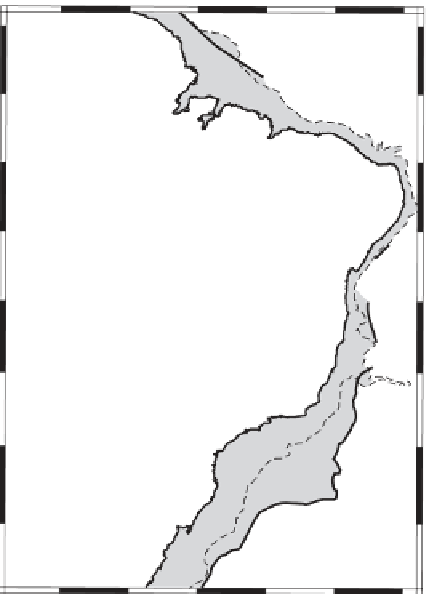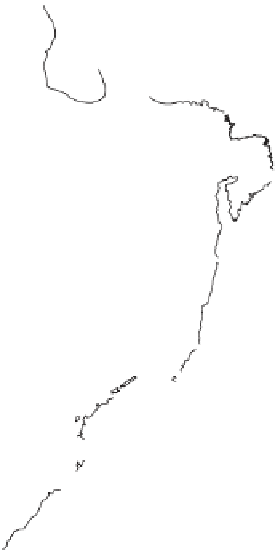Geoscience Reference
In-Depth Information
Figure 3.4 Comparison of seismicity between passive margin (shaded area, between the coastline
and the oceanic-continental [O-C] limit) and interior SCR. The extension of the passive margin was
defined using the mapped O-C limit, if available (thick solid line) offshore, or the 2,000 m bathymetric
contour (dashed line) used as a proxy for the O-C limit. Thin solid lines near the coast indicate onshore
marginal basins, not included in our definition of “passive margin”. Open circles are epicentres in
the passive margin, grey circles in the continental area (from the uniform catalogue of
Figure 3.2b
)
.
“SM” in southeast Brazil denotes the presently aseismic “Serra do Mar” coastal ranges.
and non-extended crust along this margin, as this would require more extensive work to
better define the area of influence of interior rifts.
A common definition of a “rifted continental margin” is the region of extended crust
in the transition from normal continental to oceanic crust, in areas where extension led to
“passive margin” as the area between the coastline and the oceanic-continental crustal limit
(O-C limit), shown in
Figure 3.4
.
The extension of the passive margin was defined using
the mapped O-C limit, if available, or the 2,000 m bathymetric contour (used as a proxy









































































































































































































































